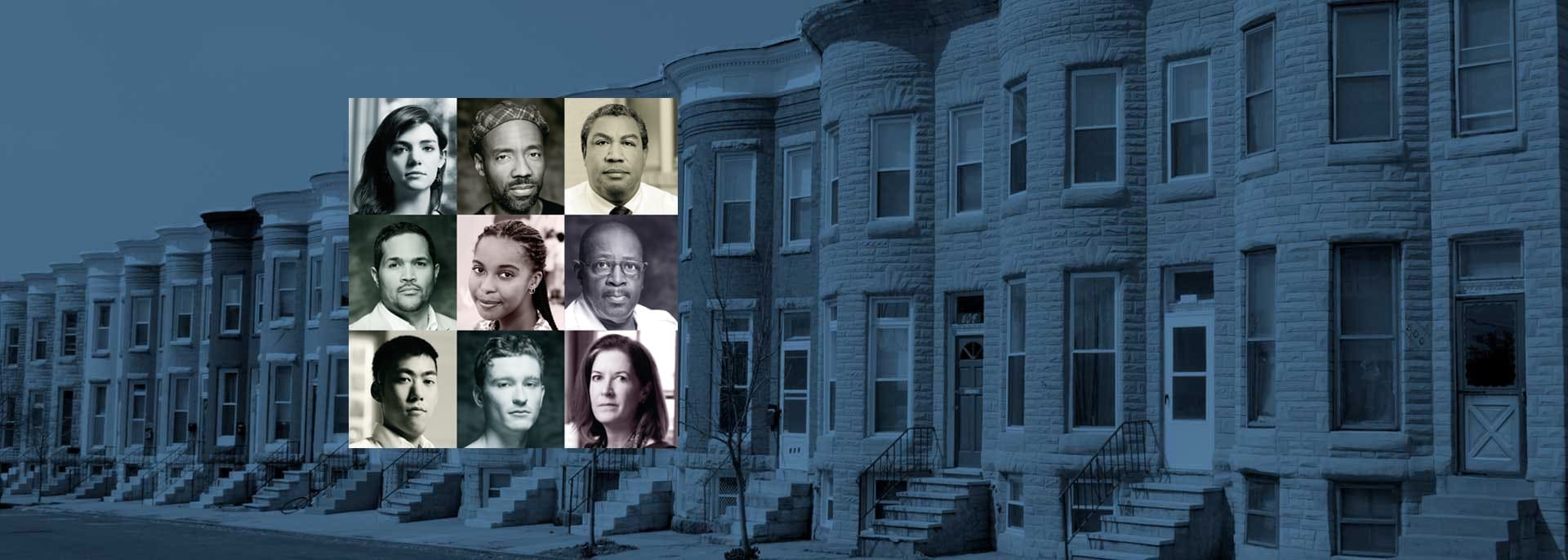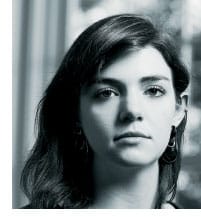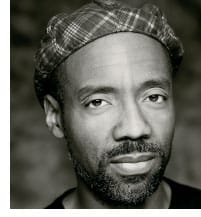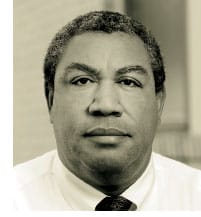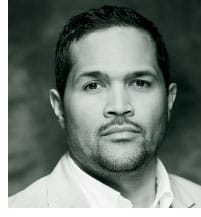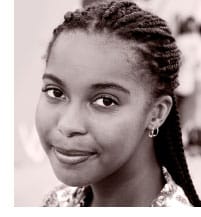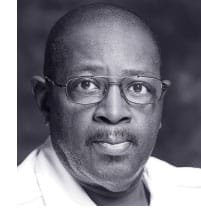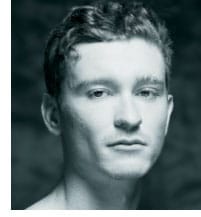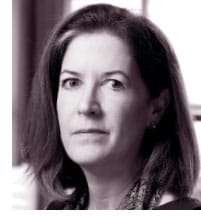Baltimore City was catapulted into the national spotlight last April, when unrest broke out, prompted by the death of Freddie Gray while in custody of Baltimore police. Much of the activity happened just a few miles from the Homewood campus. While Johns Hopkins experts are already involved with the larger community in exploring possible solutions, Arts & Sciences Magazine wanted to hear from faculty, students, staff, and alumni who were directly or indirectly affected by the events of April 27, 2015.
Here are their voices:
“How are my kids getting home?”
Hannah Holliday ’12, ’14 MS (JHU School of Education) teaches Spanish to 11th and 12th graders at Forest Park High School in northwest Baltimore City.
After school that day, I couldn’t get down Liberty Heights Avenue and through the area around Mondawmin Mall, the main transit hub for many of the students at Forest Park. It’s where they transfer buses.
When I finally got home, my roommate had the TV news on. It was a lot of uncertainty. Mainly, what was in my mind was: “How are my kids getting home?”
It was also this unbelievable feeling of: “This is just so not what Baltimore is about, and this is just so not what Baltimore City high school students are about.” And yet this is what everyone in the world is seeing. The only image they have when they think of these kids now is maybe of them throwing things at policemen. That was a heartbreaking feeling.
Some of my students wanted to talk about what was going on, but others really wanted to go back to school and get back in the routine of learning.
I had one student, she was embarrassed because her house had been burned, and she was afraid she smelled like smoke. She kept telling me everything was fine, that she was staying with other family members. But she didn’t want to sit in the classroom smelling like that. It has really stayed with me, the way that was such a real teenage reaction to the situation.
Earlier that semester, I had taken some of my students to observe a black politics class at Hopkins taught by Professor Lester Spence. It was amazing. Dr. Spence spent the first 30 minutes of his section pretty much just letting my students participate in a college-level discussion. And so when the uprising came, I put pictures from that day at Hopkins on social media. I guess it was my way of trying to remind people that Baltimore City students are not just these images you’re seeing on the TV news.
“Ground Zero was Mondawmin Mall.”
Lester Spence, associate professor of political science, teaches courses on racial history. He was one of several experts sought out by the media after the uprising.
We want to connect what happened to Freddie Gray to a set of larger systemic issues. Issues like housing trends that perpetuate racial inequality, poverty, education, lead poisoning. What happened in Baltimore in April was not just an encounter with the police that went awry. It’s about much more, including about how policing has changed. For example, since 2011, Baltimore has paid out more than $6 million in police-related settlements.
When talking to the press, I tried to articulate a more structural narrative that disavowed the idea that the problems that day were caused by kids as opposed to the bigger pictures of economics and political violence. I also wanted to tell the narrative about Mondawmin Mall. Ground Zero of the rebellion was Mondawmin Mall, located on Baltimore’s west side. It’s one of the city’s major transportation hubs, and many high school students use the mall’s bus and subway depot to get home. So do I, in fact. The police arrived in full riot gear before school let out, and the buses stopped running. That inflamed the situation.
In the two courses I teach about black politics and American racial politics, I try to use recent national policing events as a foundation to explore what these incidents teach us about racial inequality. We cannot tell the story of U.S. democracy, for example, without telling the story of black people and racism. As educators, we need to bring central issues of race to our teaching and research.
Some of my students are working on a Freddie Gray Archives Project, along with the Maryland Historical Society. Through interviews and examination of social media outlets, they are documenting the people’s history of what happened in April. The rallies that happened before and after the unrest were largely planned via social media outlets. Social media informs and mobilizes, but it doesn’t change people’s attitudes. It enables people to organize and increases the possibility of creating ruptures in the usual politics.
“There is a long way to go.”
Bill Henry ’92 serves on the Baltimore City Council representing the 4th District, which encompasses parts of north and northeast Baltimore.
When I reflect back on the uprising, the metaphor that comes to mind is chickens coming home to roost. Here in Baltimore City we’ve spent the better part—or perhaps I should call it the worst part—of the last generation and a half disinvesting in the human capital of our communities.
The pattern has been the same for a long time. When finances are tight, we cut rec and parks, and we cut libraries. Compared with 25 years ago, the police budget in Baltimore City is almost three times larger than it was. Spending on libraries and after-school programs and summer jobs hasn’t increased at all.
In some places, it has decreased. In the 1980s we had 81 recreation centers. We now have 39 of them. Now you can say that our population has dropped. But it has only dropped from 700,000 and something to 600,000 and something. It hasn’t been cut in half. And certainly the number of Baltimore City kids who need rec centers hasn’t been cut in half.
There is just no getting around the fact that over that period of a generation and a half, our city government has made a conscious and proactive decision to put more resources into police and fewer resources into youth development.
In this year’s budget negotiations, we pressed the mayor for an additional $4 million for after-school and out-of-school programs. And we got it. Is that amount of money going to put us on the scale that I would like to see? No, not yet. There is a long way to go. But it is definitely a step in the right direction.
“The march…was really a sight to see.”
Joseph Colon, associate director of JHU’s Office of Multicultural Affairs, says the office became a meeting place for Hopkins students during the unrest.
We decided to open the doors of the multicultural affairs student center on campus. We wanted to be there, as administrators, for the students. We wanted to see if there were ways that we could help them process and discuss what was going on. We wanted there to be an area for honest conversation about race and socioeconomic issues, a place to share ideas and experiences about injustice.
And to our delight, really, we had a room full of students. And the discussion in there went on for about three hours. It was a great opportunity for us to be able to say to students: ‘How can we best support you here?’
Another memorable thing for me was the march that went to Penn Station and then on to City Hall. It was a group of 200 or 250 Hopkins students, and it was really a sight to see. I remember as the march headed down Charles Street, the way some people from the community in Charles Village started joining in and showing support. You could just see a connection building.
Going forward, we are looking at a number of different questions. How do we make sure that all of the Hopkins community has a part in these conversations? What are the best ways to engage students on these topics? Are there ways that we can provide more support for our minority students?
It’s really about the well-being of our students. We want to help them figure out where their place is when it comes to living in the city of Baltimore, and what their responsibilities are as well.
“So many people just didn’t care.”
Kennedy McDaniel, a Baltimore native and a sophomore, interned this past summer with the nonprofit Jubilee Arts as part of JHU’s Community Impact Internships. She worked on Art@Work: Sandtown, in which young people in the neighborhood where Freddie Gray lived worked with artists to create community murals.
There was this student protest with other colleges in the area, and I was a part of organizing it. We were trying to reach out to people and say: “We’re having this protest and we’d love to have you be a part of it,” but it always seemed like the only people we were reaching were the ones who were already supportive, who already had an inclination for social justice.
It was hard, having this protest and feeling just very deeply affected by all of these events going on, and at the same time to look at people on the Beach behind us, playing Frisbee. So many people just didn’t care. That was the worst part.
There were a couple of people on my floor at Wolman who went out of their way to say: “Hey, if there is anything I can do, let me know,” or “How can I help?” That was encouraging, especially because it came from some people that maybe I would never have expected to hear it from.
I started working with Jubilee Arts in the second week of June, and it was fantastic. I loved being there so much. I helped on this project called Art@Work: Sandtown. There were 80 youth workers creating eight different murals in the neighborhood, and they are all from the 21217 ZIP code [where much of the unrest took place].
In the afternoons they had professional development sessions. I was in a leadership session where the kids were asked, on a scale of 1 to 10, how much power do you think you have in terms of changing the conditions in which you live? Everyone said 1 or 2, which is just crazy, because these are the people who are affected most by poverty and disenfranchisement. They’re 14, 15 years old—and they all feel that they have no way to change that.
“That Monday, I couldn’t get home.”
Marvin Pretlow, security guard at Johns Hopkins’ Homewood campus for the past seven years, says the April unrest brought back memories of the 1968 riots.
I live two blocks from where it stopped. My wife and I have lived there for close to 20 years.
That Monday I couldn’t get home because North Avenue was blocked by police and the protesters and the rioters. And if I had another way to go, that would have been by cab, but that was blocked also because of the rioting that was going on at Mondawmin. My only other choice was to go where my aunt lives, so that’s where I went, and I watched it on the news with my wife.
There was a curfew in place the rest of the week starting at 5:00 a.m., but I had to be out before that to get to work by 6:00 a.m. So for me to get to work on time, there was no bus running. And it was hard to get a cab—and expensive.
The whole thing brought back memories of the Baltimore riots in the ’60s. It was like a smoke storm. Tear gas and everything. People running around like crazy. My mother had to rush me home from school, kept me in. We saw the rest on TV.
Once you go through a couple [riots], one or two, you get tired of it.
My wife and I, we’ve made a permanent decision to stay with our aunt until we get on our feet. We’ll let the house go and start fresh in a different neighborhood. We had some good times there, but it’s time to move on and look forward to the future.
“I have a different view now.”
Sean Yamakawa is a sophomore majoring in biophysics. This past summer, he worked through JHU’s Community Impact Internship Program at Youth Empowered Society, a nonprofit that serves homeless young people.
What I saw about the uprising came from watching the news and being on social media. My perception was that violence is not the answer to what was happening in Baltimore, and so I disagreed with the violent way some Baltimore citizens were going about protesting Freddie Gray’s death.
That is a very easy perception to have when you’re living in the Hopkins bubble, and that is the only way you have really been a part of Baltimore.
I started working at a YES drop-in center in June. That was how I started speaking with people who have experienced oppression by the Baltimore police. A lot of these people were very heated on the topic of Freddie Gray.
The youth that I spoke to understood why there was violence in the uprising. It’s just a result of decades of oppression. When you experience that kind of oppression on a daily basis, and every day it feels like the police are against you, eventually people are going to snap. There is going to come a point when the only way to express how they feel is through anger.
I have a different view of the uprising now. I tend to see the riots and the violence as a justified reaction by people. It was a good way to get national attention on the mistreatment people are facing. I think that the only reason why people around the country are paying attention is because the people of Baltimore made them pay attention. If there hadn’t been any riots, then Freddie Gray’s murder would have just been swept under the rug, like all the other cases.
“They feel like they don’t have any other options.”
Cole Gennrich, a senior, and classmates Joshua Goodstein and Justin Landis wrote about the unrest last semester for an American Racial Politics class.
It was supposed to be a 15-page paper, but ended up being, like, 45 pages. One theme involved a book from 1971, Violence as Protest: A Study of Riots and Ghettos, by Robert Fogelson, a groundbreaking report at the time that covered the riots of the 1960s. I was looking for similarities between what was happening in Baltimore then and now.
The first similarity is kind of obvious—harassment of blacks by the police, including racial profiling, and other kinds of discrimination in black neighborhoods.
Another similarity is that employers tend to turn blacks away rather than hire them. Obviously, there have been some changes since the 1960s, but we interviewed people in the communities, and we heard about how there are lots of people who are at a loss when it comes to finding any sort of work that would let them put food on the table.
Other similarities include lack of affordable housing and disinvestment in certain neighborhoods.
It was a comprehensive paper. We looked at recent articles by the writer Ta-Nehisi Coates. We interviewed a criminal defense attorney. We analyzed photos. We even looked at a hip-hop song, “The Blacker the Berry” by Kendrick Lamar.
It gave us a chance to examine the roots of the marginalization of black neighborhoods, from the time of the New Deal up through the Civil Rights era and then today, when ghetto conditions still exist, and people are deciding to exercise violence because they feel like they don’t have any other options.
“Why is Freddie Gray dead?”
Hollis Robbins, director of the Krieger School’s Center for Africana Studies, says the center can play a role in bringing past and current racial issues to the foreground.
one thing I noticed during the whole thing was the media’s repeated use of the word “riot” to describe what happened here, and I have a problem with that. The standard definition of “riot” suggests mayhem and disorder. While there certainly were pockets of violence and looting on the day of Freddie Gray’s funeral, the collective public response looked more like an uprising. The Baltimore Sun refers to Monday actions as a “riot” but uses “unrest” to describe the various demonstrations during the remainder of the week. “Uprising” captures better the motivation behind those who were in the streets and the sense of so many people saying “enough!” to police violence.
The first priority of the Center for Africana Studies is to teach. We want our students to think critically about the roots of this country’s racial history as well as current racial conditions. One way we do that is by planning courses that investigate municipal expenditures and policies regarding policing, transportation, and economics. We train our students to understand that decisions that have been made and ratified over time have led to inequalities we see in cities today. I emphasize the importance of the Fourth Amendment in Civil Rights courses so that students understand the constitutional prohibition against unwarranted searches and seizures of their persons, property, and cellphone data.
We issued a statement from the Center for Africana Studies the day after the unrest that basically agreed with writer Ta-Nehisi Coates, who said that the plea to remain peaceful and nonviolent should be directed toward the police. Our statement called on the police to answer questions such as: What particular threat did Freddie Gray pose? Why is mere eye contact and then running worthy of detention? Why is Freddie Gray dead? Those questions still haven’t been answered.
Web Extra
Baby Booking is a documentary by two recent grads, Michael Nakan ’14 and Abby Harri ’14, chronicling the lives of urban youth and incarceration.
Watch now:
Baby Booking from Michael Nakan on Vimeo.

